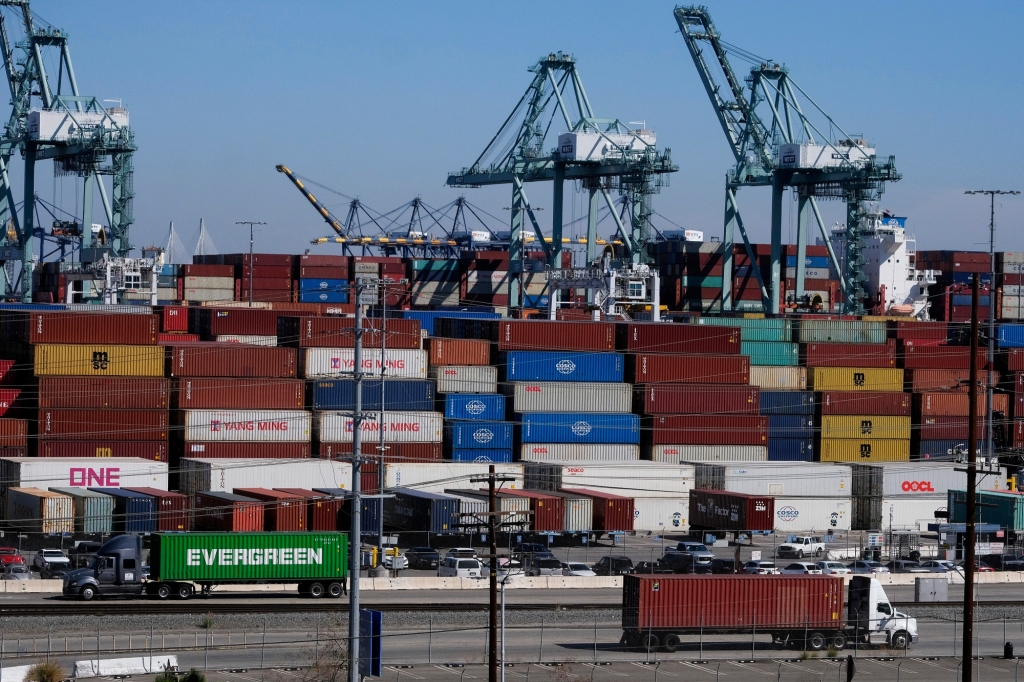Cargo volumes at the Port of Los Angeles remained, as expected, on a downward trend in April, Executive Director Gene Seroka said on Thursday, May 18.
Altogether, after the first four months of 2023, the port has handled 2.5 million TEUS, 29% less than at this point last year, which was the port’s historical best four-month run, Seroka said.
“Undoubtedly,” he said, “it’s been a challenging year so far.”
The Port of Los Angeles processed 688,110 twenty-foot equivalent units — also known as TEUs, the industry’s measuring standard — last month. That was down 22% compared to April 2022, which was the port’s second busiest April on record.
In the neighboring Port of Long Beach, April cargo declined by 20.1% from the same month last year which, in that port’s case, was the busiest it had seen on record.
Seroka announced the Port of L.A. numbers at his monthly online media briefing, adding that the drivers behind the ongoing slump remain the same:
- A cooling global economy with ongoing concerns about inflation and high interest rates.
- Packed warehouses still waiting to clear out goods that surged in from overseas during the pandemic.
- Prolonged West Coast labor negotiations that have made shippers nervous enough to send cargo to other ports on the Gulf and East Coast.
“If economic conditions improve and we get a labor deal in place,” Seroka said, “that will help improve the volume the second half of the year. We are prepared for the next cargo surge, whenever it comes.”
A peak season for fall holiday goods, is still anticipated.
“My estimate on a peak season based on purchase orders and discussions,” Seroka said, “is we’ll probably see a relatively short peak season in September and October; it may start a little earlier and it could run into November.
“Overall,” he added, “I’m optimistic we’ll see a better second half of the year.”
But competitive ports elsewhere, he noted, also have been aggressively pushing…
Read the full article here







